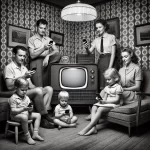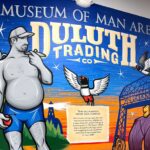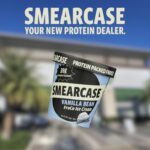Why Busting Myths is a Powerful Framework for Marketers to Correct the Record
Myth busting can be a powerful tool in marketing efforts to help brands better communicate what their products or services do for customers and clients. Companies can create a more informed and engaged customer base by addressing common myths or misconceptions about their offerings. And often change the conversation.
First, let’s define what we mean by myth-busting.
This is the process of debunking false or misleading information that a group commonly believes of people.
Myth busting allows a marketer to address misconceptions about a brand, product, or service that may be preventing potential customers from making a purchase or engaging with a company. If everyone shares a common perception, busting the myth becomes a strategic goal for marketing.
When I worked for a plastic wine cork company, I learned that our product was more than 60% air. We developed creative ways to shift our framing from selling plastic to selling air filters or sophisticated tools for winemakers to control oxygen flow.
The myth was we sold chunks of plastic – the truth was we were a highly engineered air filter helping winemakers modulate and control the ingress of oxygen into a wine bottle, to help finish the development of the wine’s taste and flavor.
So, how can myth-busting be used in marketing efforts?
How To Use Myth-Busting
Highlighting the science behind a product or service
One way to use myth-busting in marketing is to showcase the scientific research and data behind a product or service. For example, a skincare brand might debunk the myth that “natural” products are always better for your skin by highlighting the science behind their active ingredients and how they work to improve skin health.
Addressing common concerns or objections
Another way to use myth-busting is to address common concerns or objections potential customers may have about a product or service. For example, a meal delivery service might debunk the myth that their meals are too expensive by breaking down the cost per meal and comparing it to the cost of eating out or buying groceries.
Dispelling misconceptions about an industry
Myth busting can also be used to dispel misconceptions about an industry or category of products. For example, an electric car manufacturer might debunk the myth that electric cars are slow and have a limited range by highlighting the performance and capabilities of their vehicles.
Busting Six Myths From About Brands
Here are some examples of successful campaigns that use this technique.
Oatly
Oatly is a Swedish plant-based milk company that has recently gained popularity. In their marketing, Oatly has used myth-busting to challenge the idea that dairy milk is the only healthy and balanced diet option. Their messaging points out that cows’ milk is designed for calves, not humans, and plant-based milk can provide the same nutritional benefits without negatively impacting the environment.
Purple
Purple is a mattress company that has used myth-busting to challenge the idea that memory foam is the best mattress material. Their messaging highlights the drawbacks of traditional memory foam, such as heat retention and lack of support, and promotes their patented material as a better alternative. By addressing common misconceptions about mattress materials, Purple has been able to differentiate itself from its competitors and win over customers.
Mailchimp
Mailchimp is an email marketing platform that has used myth-busting to challenge the idea that email marketing is dead. Their messaging highlights the continued importance of email marketing in reaching customers and driving sales, despite the rise of social media and other digital channels. By addressing common misconceptions about the effectiveness of email marketing, Mailchimp has been able to position itself as a valuable tool for small and mid-sized businesses looking to grow their customer base.
Coca-Cola’s “Share a Coke” campaign
In 2014, Coca-Cola launched its “Share a Coke” campaign, which replaced the Coca-Cola logo on its bottles with famous names. The campaign was a huge success, with sales increasing by 2.5% in the US alone. One reason for the campaign’s success was that it addressed the myth that Coca-Cola was just a mass-produced soda with no personal connection. By encouraging customers to share a Coke with a friend or loved one, the campaign created an emotional relationship between the brand and its customers.
Dove’s “Real Beauty” campaign
Dove’s “Real Beauty” campaign, launched in 2004, aimed to challenge traditional beauty standards by featuring women of all shapes, sizes, and ages in its advertisements. The campaign debunked the myth that beauty was limited to a narrow set of physical characteristics and celebrated diversity and individuality instead. The campaign was hugely successful, with sales increasing by 700% in the first two months of its launch.
Apple’s “Get a Mac” campaign
Apple’s “Get a Mac” campaign, launched in 2006, poked fun at the myth that PCs were just as good as Macs. The campaign featured a personification of a Mac and a PC, portraying the Mac as excellent, hip, and efficient. The PC was portrayed as outdated and prone to errors. The campaign was a huge success, with Mac sales increasing by 39% in the first year of the campaign.
These are just a few examples of how small to mid-sized companies can use myth-busting messaging and communications in their marketing efforts. By challenging common myths or misconceptions, these companies can stand out in a crowded marketplace and position themselves as valuable solution for customers.
What myths are you busting for your brand?
You can set up a time to chat with me about your marketing challenges using my calendar. Email me jeffslater@themarketingsage.com Call me. 919 720 0995. The conversation is free, and we can explore if working together makes sense. Watch a short video about working with me.
Photo by Daniels Joffe on Unsplash





